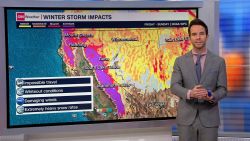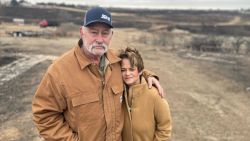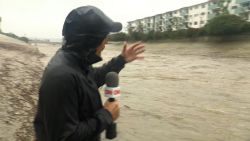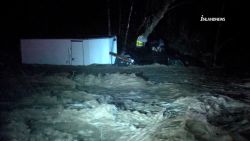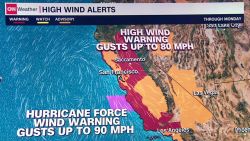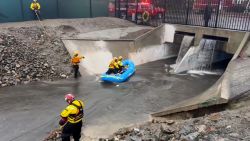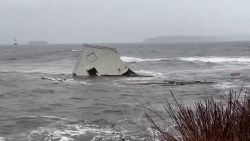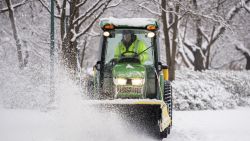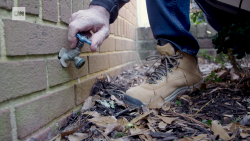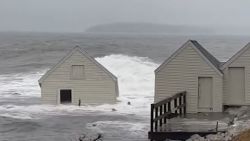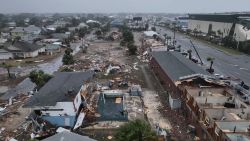Story highlights
A hurricane warning is issued for New Orleans, extending east to the Florida border
Nate is expected to make landfall near New Orleans on Sunday
Nate has strengthened into a Category 1 hurricane, the National Hurricane Center said late Friday night.
The hurricane has sustained winds of 75 mph and is located 495 miles south of the mouth of the Mississippi River, in the southern Gulf of Mexico.
States from Louisiana to Florida were bracing Friday for Nate, forecast to pound the Gulf Coast this weekend.
A hurricane warning extends from New Orleans to Lake Pontchartrain and Grand Island, Louisiana, eastward to the Alabama-Florida border.
The storm is expected to make landfall by Sunday east of New Orleans, which was devastated 12 years ago by Hurricane Katrina. It would be the third hurricane, after Harvey and Irma, to hit the US mainland in six weeks.
A storm surge warning was put in place from Morgan City to the western part of the Florida Panhandle, as well as along the northern and western shores of Lake Pontchartrain.
“Residents in these areas should heed any evacuation instructions given by local officials,” the hurricane center said.
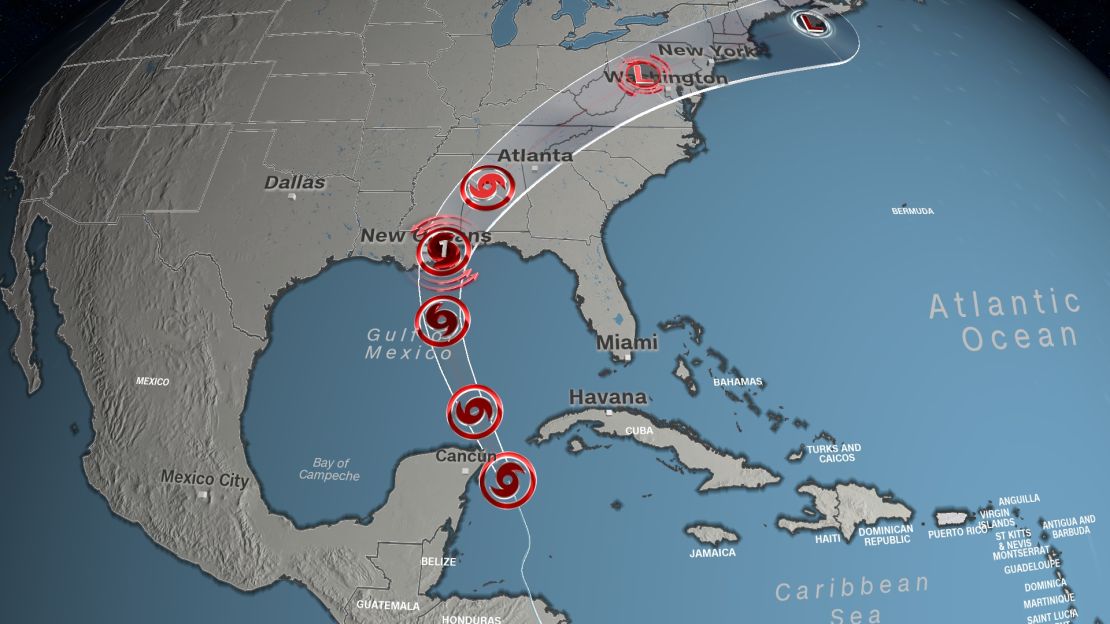
Nate killed at least 24 people as it passed Thursday over Costa Rica, Nicaragua and Honduras, where it caused widespread flash flooding and mudslides, officials said.
The storm was forecast to gain strength as it moved across the Gulf of Mexico Friday night into Saturday and become a hurricane by the time it reaches the northern Gulf Coast, the hurricane center said.
New Orleans gearing up
New Orleans Mayor Mitch Landrieu ordered a mandatory evacuation of the Venetian Isles, Lake Catherine and Irish Bayou areas of the city after having already declared a state of emergency Thursday.
“We remain focused on vulnerabilities in Venetian Isles, Lake Catherine and Irish Bayou because these areas are outside of the levee system, and because one of the greatest threats to this storm is not necessarily interior rain, but storm surge. It is a serious concern to us,” Landrieu said Friday. “The projections are that we could see six to nine feet of surge.”
He said residents must evacuate by 12 p.m. (1 p.m. ET) Saturday, when the nearby flood gates will be closed. The New Orleans Fire Department and Neighborhood Engagement Office will be conducting outreach through Saturday to coordinate the evacuation effort, he added.
With the majority of the storm’s impact and storm surge expected to occur overnight, Landrieu also announced a mandatory curfew will take effect Saturday at 6 p.m. and end Sunday morning. In preparation for overnight flooding, he said the city’s police department will put up barricades and close underpasses once the curfew is in effect.
“If we all stay informed, if we all stay alert, if we all stay prepared, ultimately, we will all be safe, which is our No. 1 priority,” Landrieu said.
Gov. John Bel Edwards declared a state of emergency for all of Louisiana. The storm will “make landfall in the close vicinity of New Orleans,” the proclamation noted, adding that six parishes have declared emergencies and others would do so soon.
New Orleans, much of which lies below sea level, was gearing up for a hit, and Landrieu urged people who live “outside the city’s levee protection system or in low-lying area” to seek higher ground.
Residents have been wary since the city’s unique drainage system experienced critical deficiencies during heavy summer rainstorms, leading to the flooding of several hundred properties.
Of the city’s 120 main drainage pumps, three major and nine smaller ones were offline Thursday night, city records show. Also, all 24 major pump stations had backup generators, records show, as only three of five turbines that help power the city’s oldest, most powerful pumps were available for service, a city water utility spokeswoman told CNN.
“Residents who live inside the levee system should prepare to take shelter with essential supplies including food, water and medications,” the mayor said Thursday.
Edwards authorized 1,300 National Guard troops to mobilize ahead of the storm, with some headed to New Orleans to help monitor the pumps, he said.
Storm to move through quickly
Nate would be the first hurricane to hit Louisiana since Hurricane Isaac in 2012 as a Category 1 storm.
“It will still be fairly strong when it makes landfall, but it will be a quicker moving storm than the last few we have had,” CNN meteorologist Haley Brink said. “It’s supposed to be in and out pretty quickly.”
The storm could drop 3 to 6 inches of rain, with 10 inches possible in some areas, from the central Gulf Coast north through Tennessee and the southern Appalachians through the weekend, possibly spawning flash floods, the hurricane center said.
The last hurricane to hit the Louisiana-Mississippi-Alabama region in October was Hurricane Lili in 2002. The last time three hurricanes hit the mainland in the same year was 2008, when Dolly, Gustav and Ike came through.
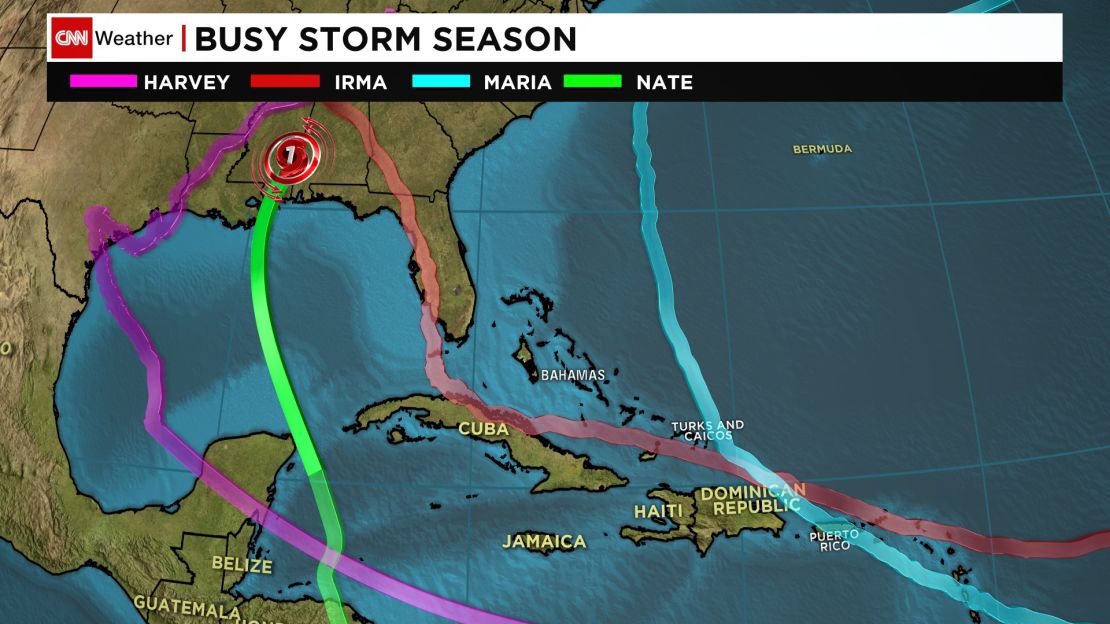
Gulf Coast states prepare
Hurricane, tropical storm and storm surge watches were issued late Friday from Florida’s border with Alabama east as far as Indian Pass, the hurricane center said. The tropical storm watch was later expanded to include most of Central Alabama and several counties in northwest Georgia, according to local National Weather Service offices.
With parts of Florida still reeling from Hurricane Irma, Gov. Rick Scott has declared a state of emergency for 29 counties.
“Based on the latest forecast from the National Hurricane Center, (Tropical Storm Nate) will continue in the Gulf of Mexico and we expect it to become a hurricane and bring severe weather to the Florida panhandle this weekend,” Scott said Friday. “To be clear, Florida is now in the cone.”
He told residents to anticipate evacuation zones, warning that bridges will close once wind speeds get to 30-40 miles per hour and people won’t be able to evacuate.
RELATED: Finding a contractor will be tough for Harvey and Irma victims
“In Florida, we know to prepare for the worst while hoping for the best, but we don’t take any chances,” Scott said, urging people to get their medications and have three days of food and water. “Please stock up on supplies today, the storm is … fast-moving.”
Mississippi Gov. Phil Bryant said in a news conference the state was well-prepared for Nate.
Bryant said he had signed an emergency order for a state of emergency in six southern counties.
Mississippi Emergency Management Agency director Lee Smithson said residents should “ride out the storm in the safest place possible” and listen to any evacuation orders.
“We can see a storm surge of up to 10 feet, tornadoes, inland flooding and flooding of low-lying areas. This storm will impact the entire Mississippi Gulf Coast,” he said.
Smithson said people needed to prepare for winds of 80 mph, “widespread power outages and be prepared to be on your own for 72 hours with no electricity, no running water, no stores open for food.”
In Alabama, a statewide emergency declaration signed by Gov. Kay Ivey went into effect Friday morning. The move “frees up personnel and resources in case there is a need to respond to any storm related activity.”
Mayor Sandy Stimpson of Mobile, Alabama, warned residents Friday about storm surge.
“We encourage citizens in low-lying areas to pay special attention to newscasts,” he said at a news conference. “There is a projected 4- to 7-(foot) storm surge. It will happen to coincide with high tide, which will give you additional water levels.”
Mobile officials were checking storm drains for debris, taking measures to avert power outages and deploying critical equipment. Shelters were prepared to open, if necessary, Stimpson said.
“Don’t wait ‘til Saturday after dark to decide what you have to do in case things with the storm change,” he said.
Deadly storm slams Central America
Of the 24 dead in Nate’s passage through Central America, 12 died in Nicaragua, 10 in Costa Rica and two in Honduras, officials said. Several people also were reported missing after the storm hit.
Hundreds were rescued from floodwaters, and many lost power and running water in Nicaragua, Honduras and Costa Rica, officials said.
The main threat for Central America was heavy rainfall, which triggered life-threatening flash flooding and mudslides.
Costa Rica President Luis Guillermo Solis declared a national state of emergency to assist those affected by the storm.
Rain was expected through Friday night in parts of Nicaragua, Honduras, Costa Rica, Panama and Belize, forecasters said.
This story has been updated to reflect the latest death toll from authorities.
CNN’s Carma Hassan, Alaa Elassar, Michelle Krupa, Matt Wotus, Brandon Miller and Julia Jones contributed to this report.



